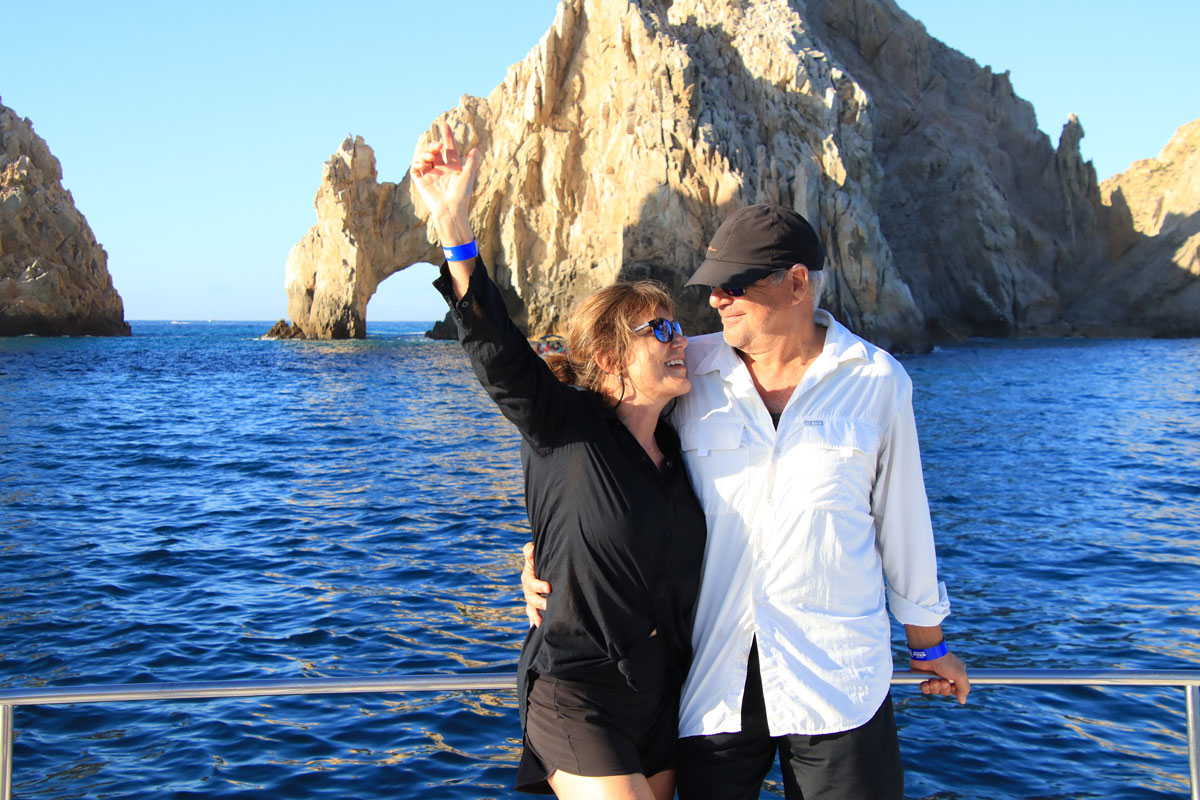Scuba Diving in Cabo San Lucas: Best Dive Sites and Tours
Jacques Cousteau raved about the sea life he discovered in the Sea of Cortez, Mexico, calling it “the world’s richest sea.”
The waters are home to sea turtles, hammerhead sharks, giant manta rays with 12-foot wingspans, sea lions and more than 900 species of reef fish.
We’ve dived several places around Cabo san Lucas and Los Cabos, which snuggles up to the Sea of Cortez.
And we can tell you – there’s awesome scuba diving in Cabo San Lucas!
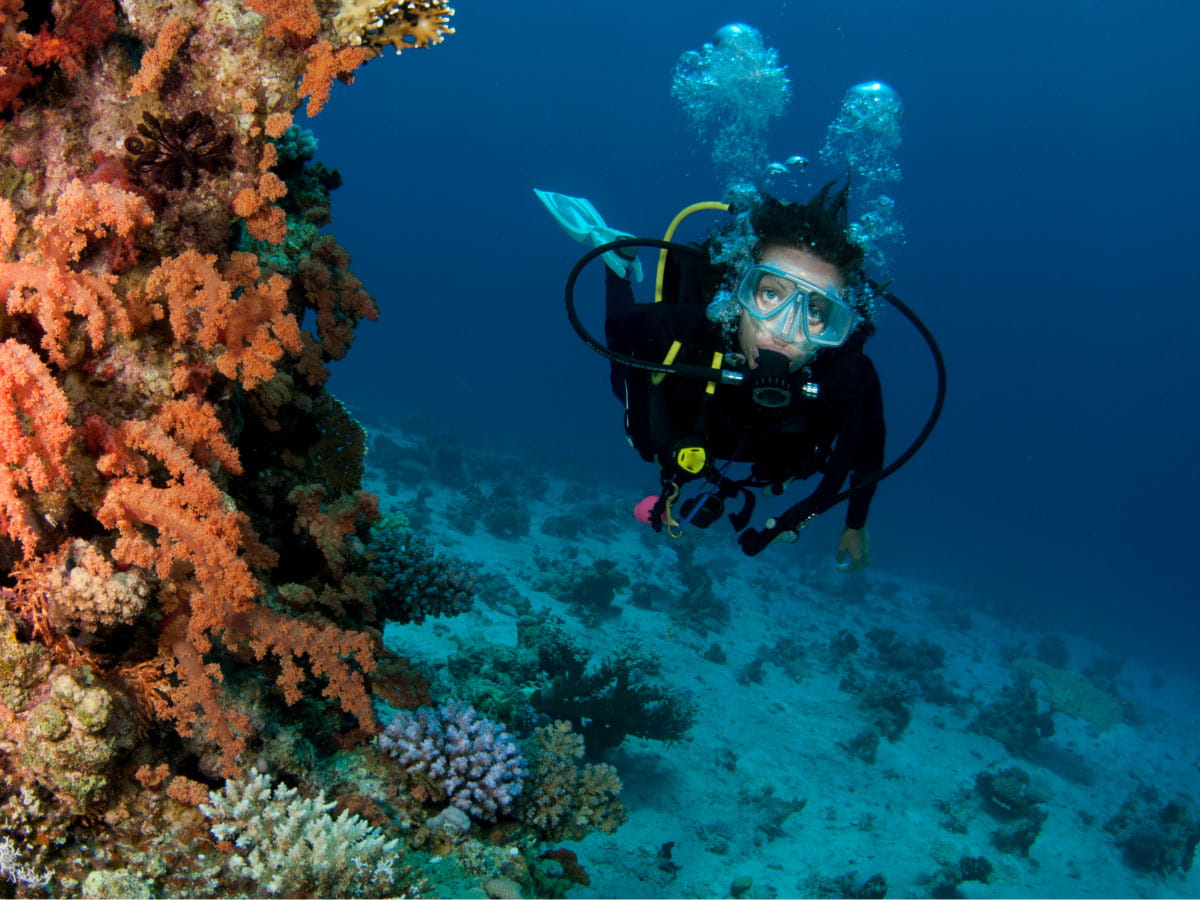
Guide to scuba diving Los Cabos:
Scuba diving in Cabo (experience)
Scuba diving in Cabo San Lucas, Mexico
Let’s talk more about “Cabo” (as it’s called for short) and the Sea of Cortez.
Cabo (or Los Cabos) is located at the tip of the Baja California Peninsula in the Mexican state of Baja California Sur – right where the marine-rich Sea of Cortez meets the Pacific Ocean.
The Sea of Cortez (also called the Gulf of California) is the 700-mile-long sea of water hugged by the Baja Peninsula on one side and mainland Mexico on the other.
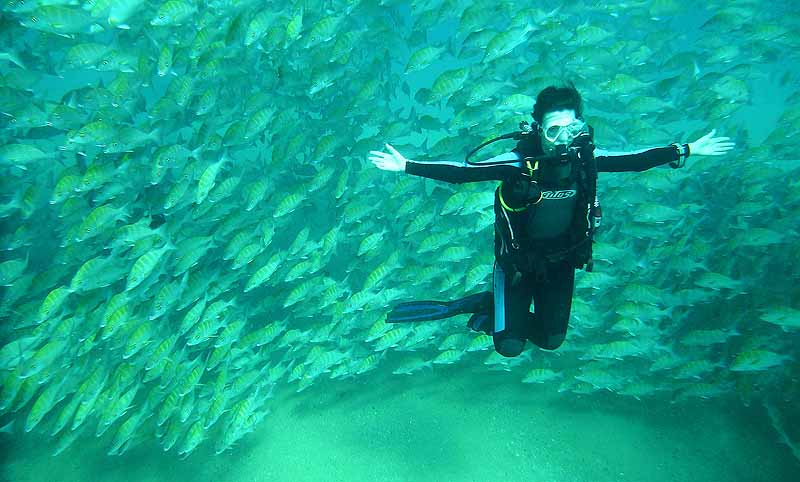
Because of its strong tidal flow and water movement, plankton and fish move about as if in a washing machine – attracting dense concentrations of sea lions, dolphins, humpback whales, turtles, sharks and other sea life.
For scuba divers, the area is a marine paradise – diving is one of the best things to do in Cabo!
Beginners can be comfortable diving easy sites just a short boat ride away from Cabo San Lucas (the main resort town in the area).
More challenging and dramatic offshore walls entice intermediate and expert divers.
And then further away in Cabo Pulmo, well, you’ll be amazed by what you see there!
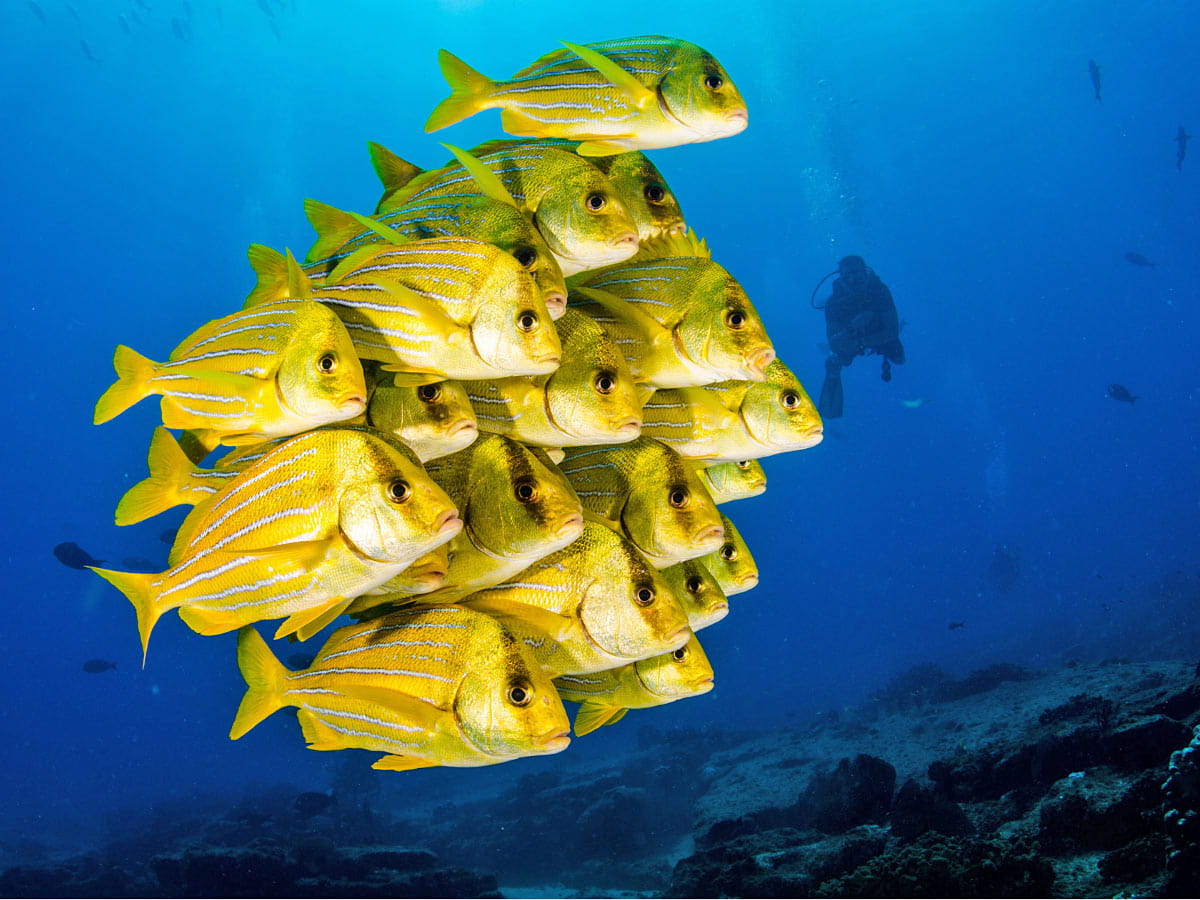
5 Best dive sites in Cabo San Lucas
1) Land’s End
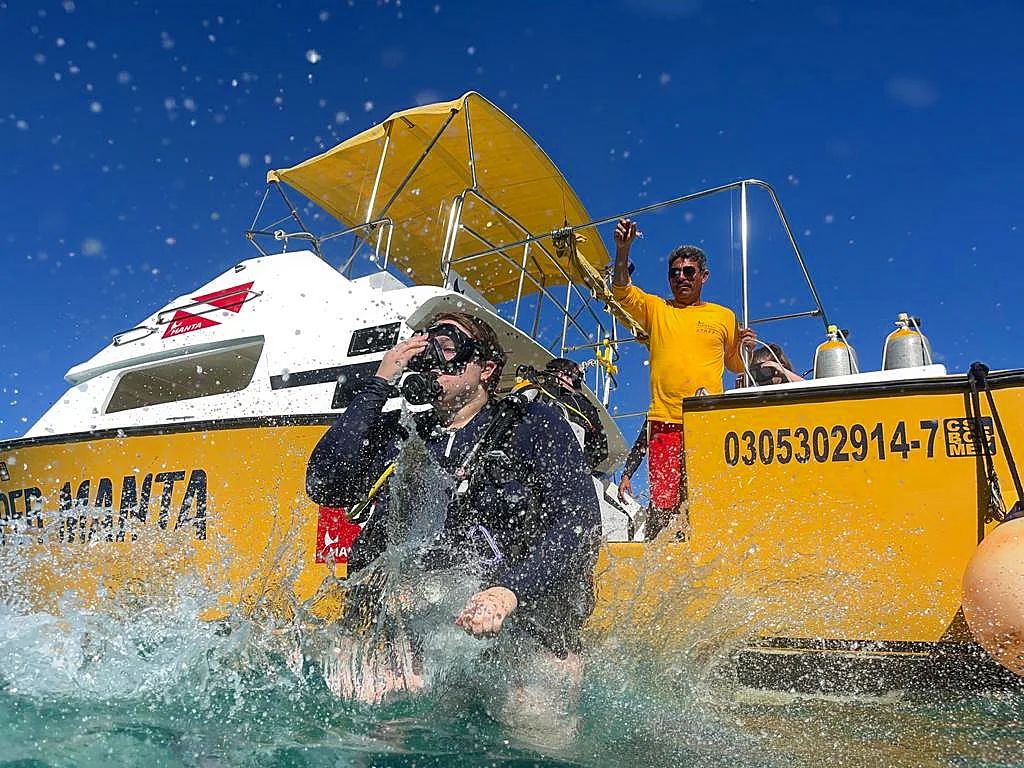
Land’s End is one of the most popular local dive sites in Los Cabos because it’s so close to the Cabo San Lucas Marina.
It’s the area right at the end of the Baja California Peninsula that’s famous for its dramatic rock formations, including the natural rock Arch (El Arco).
Land’s End is just a 5- to 10-minute panga or boat ride away.
At Neptune’s Finger (the soaring finger-like rock that pokes up out of the sea), you can see the famous underwater sandfall beginning at a depth of 100 feet. It was supposedly discovered by Jacques Cousteau.
(Sandfalls are unique phenomena where sand flows down a cliff much like a waterfall does.)
Another Land’s End dive site is the rock-covered North Wall. It offers some of the best scuba diving in Cabo San Lucas for beginners.
You start from a shallow sandy bottom, gradually diving deeper until about 40 feet, when you start to see rock boulders.
The dive site is home to eels, pufferfish and lobster.

If you dive Land’s End in summer or autumn, you’ll probably also be treated to a dazzling display of Mobula rays (also called devil rays).
Large schools of these rays enter the Cabo San Lucas Bay to court and mate during this time of year.
You can see them jumping out of the water and splashing on the surface. And while diving, you see them underwater too.

We’ve dived Cabo Pulmo (see #5 below) with Manta.
One of the top dive operators in Cabo, they’re a PADI 5-star dive center and provide excellent individual attention.
They offer highly-rated two-tank dives in Cabo San Lucas Bay for small groups of certified divers – so you can enjoy two beautiful dive sites at Land’s End on one four-hour dive excursion.
Dive Ninjas also take certified divers on semi-private scuba tours of Land’s End. They limit their group size to no more than four divers per dive guide.
Dive Ninjas was rated the best scuba dive operator in the Pacific and Indian Ocean area in the 2023 Scuba Diving Magazine Readers Choice Awards.
2) The Corridor
The Tourist Corridor is the 20-mile stretch of coastline running between the two main Los Cabos towns of Cabo San Lucas and San Jose del Cabo.
A 20-minute boat ride from the marina, it offers more opps for some great Cabo San Lucas scuba diving.
Here, you can swim over underwater canyons and enjoy drift diving. Visibility is good (often 80 to 100 feet).

Santa Maria Bay, a popular snorkeling spot, is particularly ideal for beginner to intermediate divers – with a reef and corals at a depth of 20 to 60 feet.
Keen on barracuda, hawkfish, different types of moray eels, angelfish? See them all here. You might even spot a shark.
You don’t have to choose between Land’s End or the Corridor.
You can go on a three-tank dive excursion that combines two dives at Land’s End with a third, totally different dive along the Corridor.
3) Gordo Banks
Located about 10 miles offshore from San Jose del Cabo, Gordo Banks is an underwater mountain. And the shark diving is epic here!
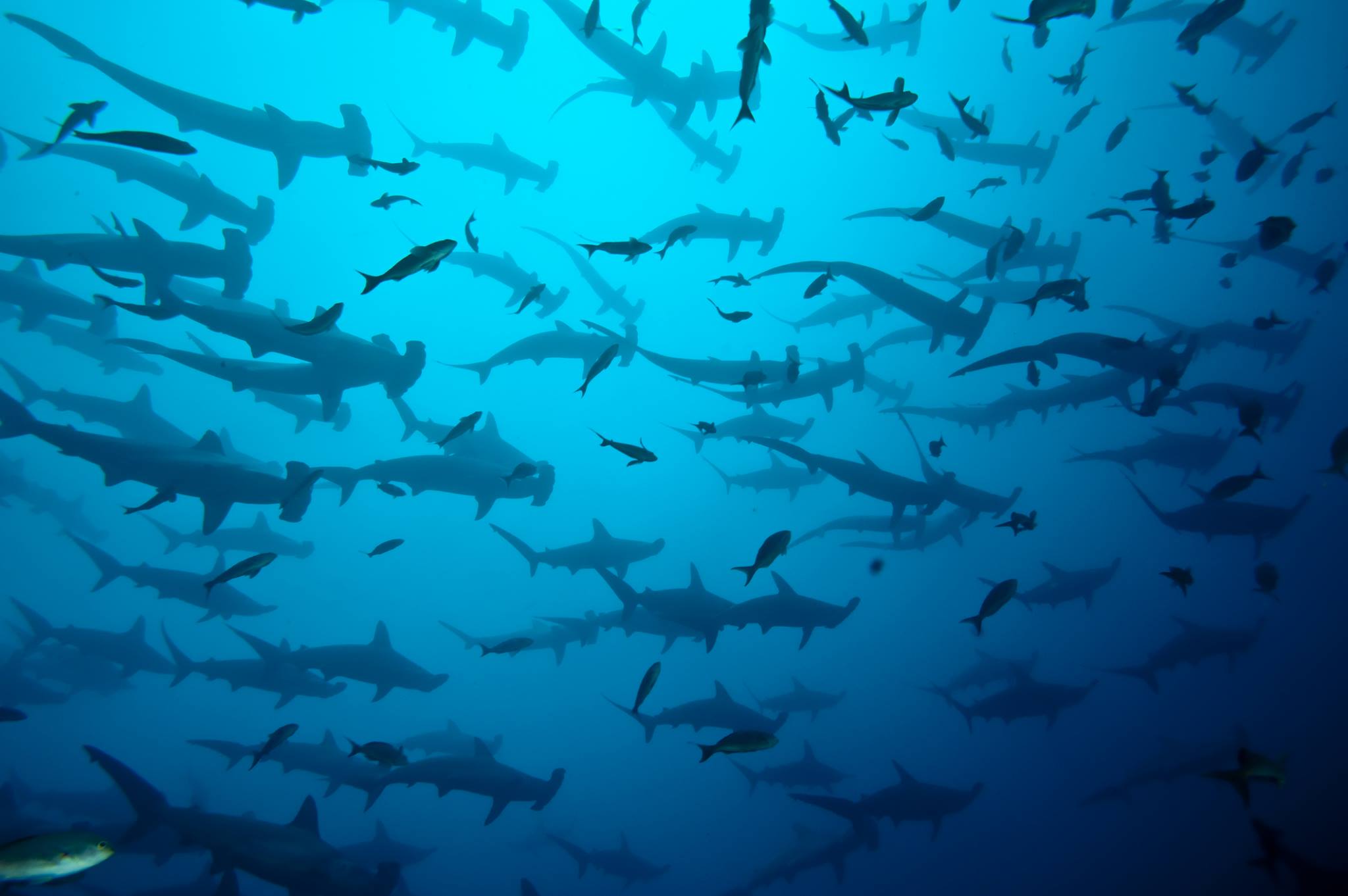
Huge numbers of pelagic fish gather around the top of this sea mount, which is about 120 feet underneath the surface.
Schools of hammerhead sharks are the big draw, inviting experienced divers to sink deep into open blue water at Gordo Banks. You may also spot giant manta rays and whale sharks.
Boat rides from San Jose del Cabo take about 50 to 60 minutes to reach the dive location.
4) Diving La Paz
Another one of the best Cabo scuba diving activities is to dive with sea lions at Los Islotes near La Paz, about a two-hour drive northeast of Cabo San Lucas.
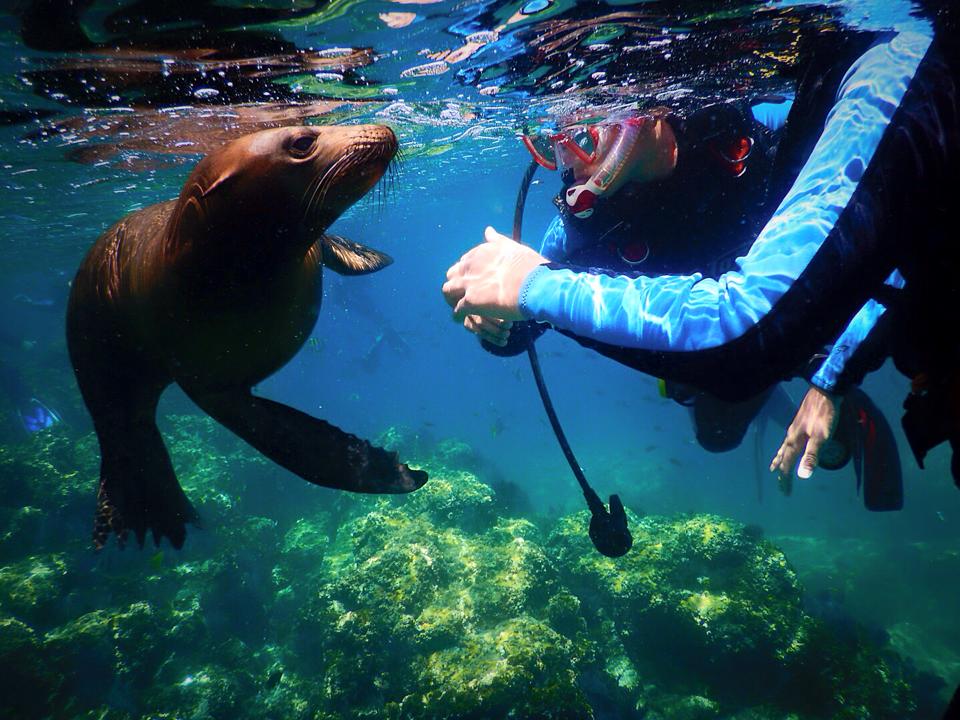
Los Islotes is home to a large sea lion colony of about 400 sea lions and pups, and diving (or snorkeling) with them is a unique experience!
The youngsters, in particular, are very curious, and they’ll zip right up to you to check you out.
La Paz is also famous for snorkeling with whale sharks.
From October to February, whale sharks (the largest fish in the world) flock to the Bay of La Paz to feed on plankton there.
On a boat tour, you can go out into the bay and snorkel with them.
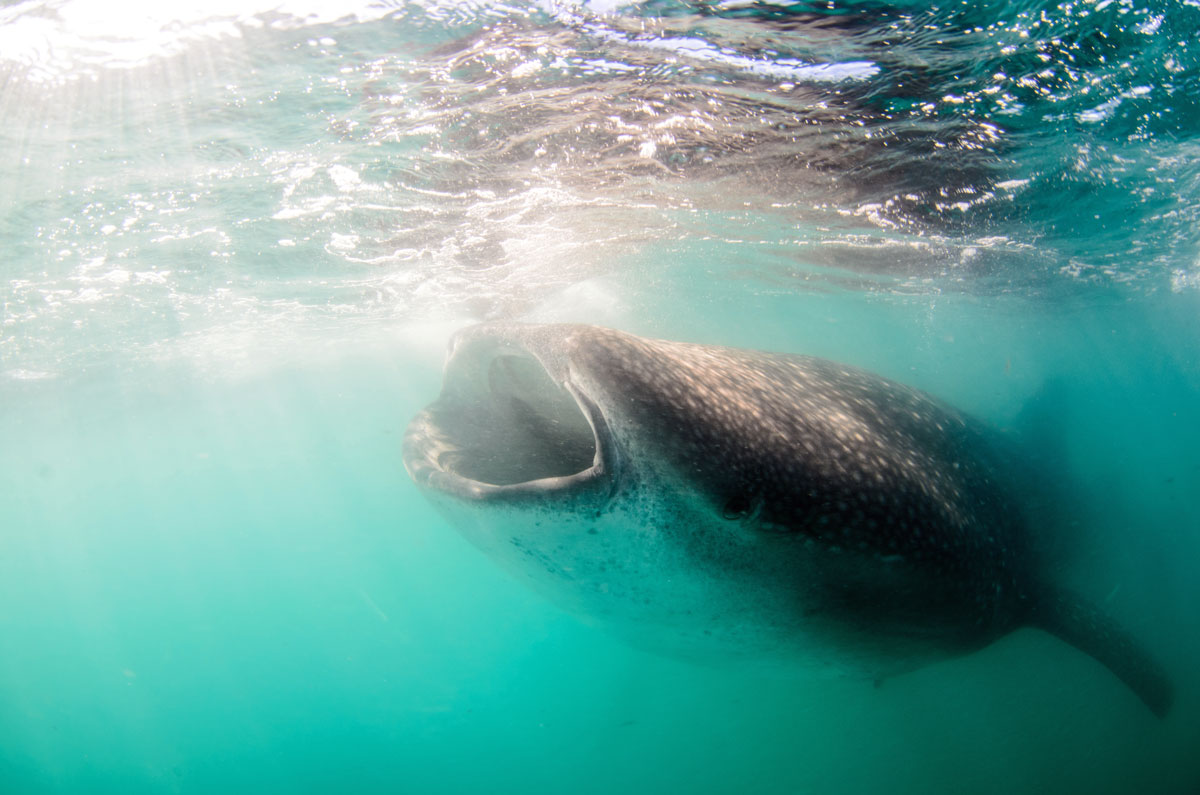
We’ve swum with the whale sharks on two different occasions now – and it’s quite a wondrous sight to see one of these gentle creatures (almost as big as a bus) glide right by.
You may also glimpse whale sharks while diving El Bajo, a group of three seamounts about eight miles from Los Islotes.
5) Cabo Pulmo diving
Then there’s Cabo Pulmo. This national marine park lies some 62 miles north of Cabo San Lucas along the East Cape of the Baja California Peninsula.
It’s remote, it’s wild, it’s starkly beautiful – and it’s one of the best Cabo day trips!
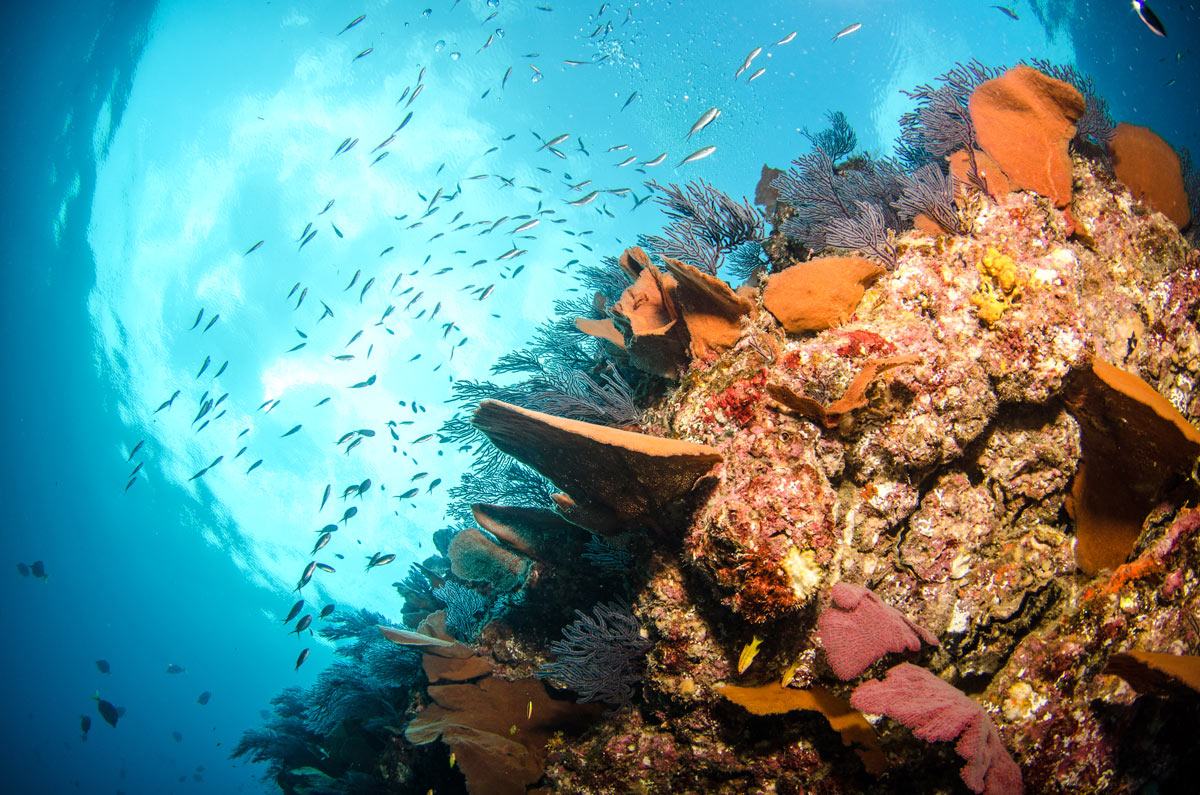
Home to the oldest coral reef on the west coast of North America, this national marine sanctuary is about 27½ square miles.
It was declared a UNESCO World Heritage Site in 2005.
And it teems with sea turtles, Mobula rays, dolphins, large schools of yellow porkfish, all sorts of other tropical fish like parrotfish, bull sharks and the occasional tiger shark too.
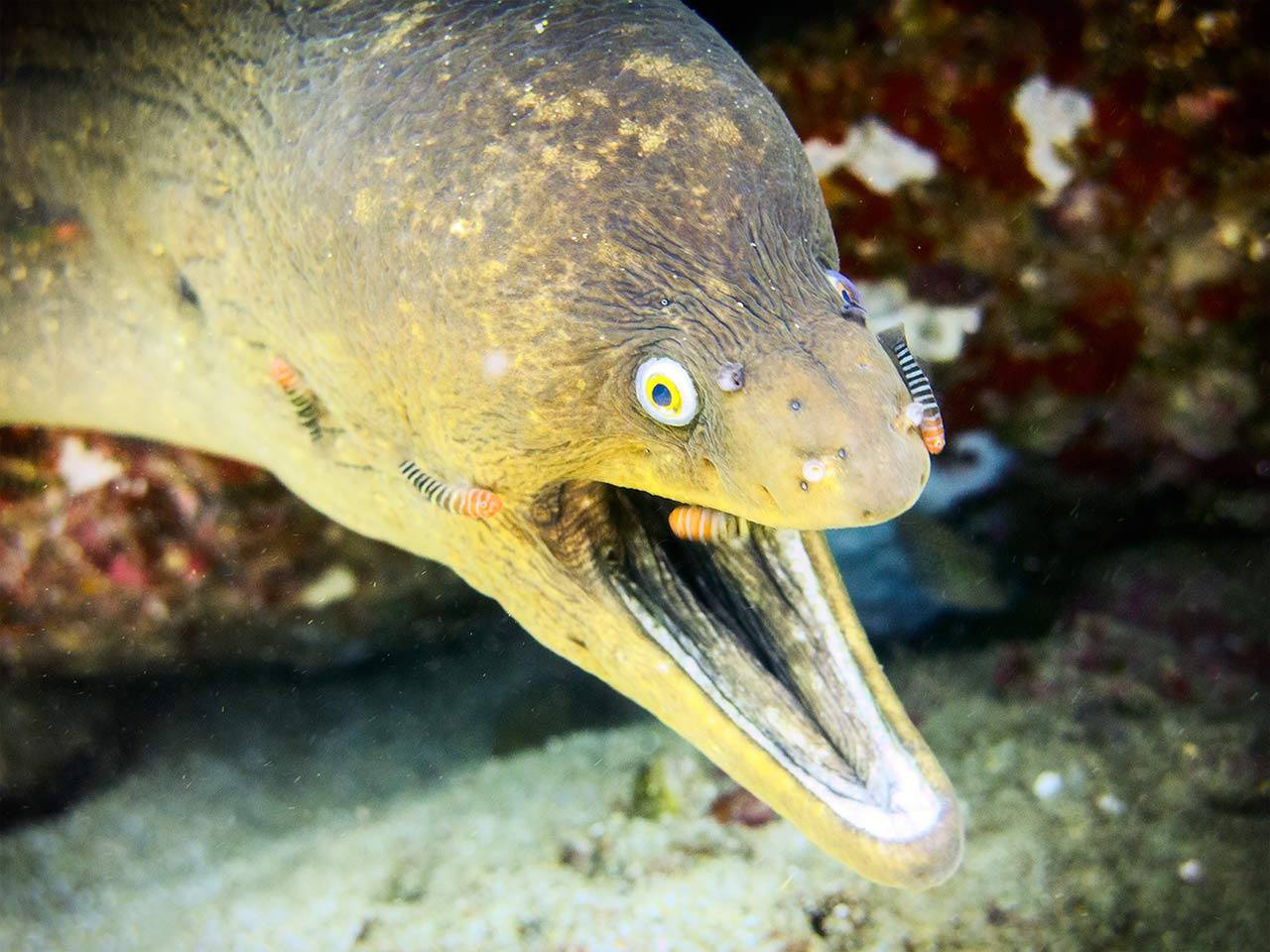
The expedition to reach Cabo Pulmo National Park usually involves a two-hour scenic drive (including along a bone-jarring stretch of bumpy sand tracks the last six miles), then a 10- to 15-minute boat ride from the beach.
We enjoyed diving Cabo Pulmo with Manta.
They happened to whisk us out on a fast 38-foot twin-diesel dive boat from Cabo. But their all-day Cabo Pulmo dive trips usually involve a van ride to get there.
And, yes, we spotted many bull sharks along with one tiger shark, which circled and followed us quite closely for a while (making us a teeny bit nervous). But talk about exhilarating!
Manta’s Cabo Pulmo dive trips are offered from May to November.
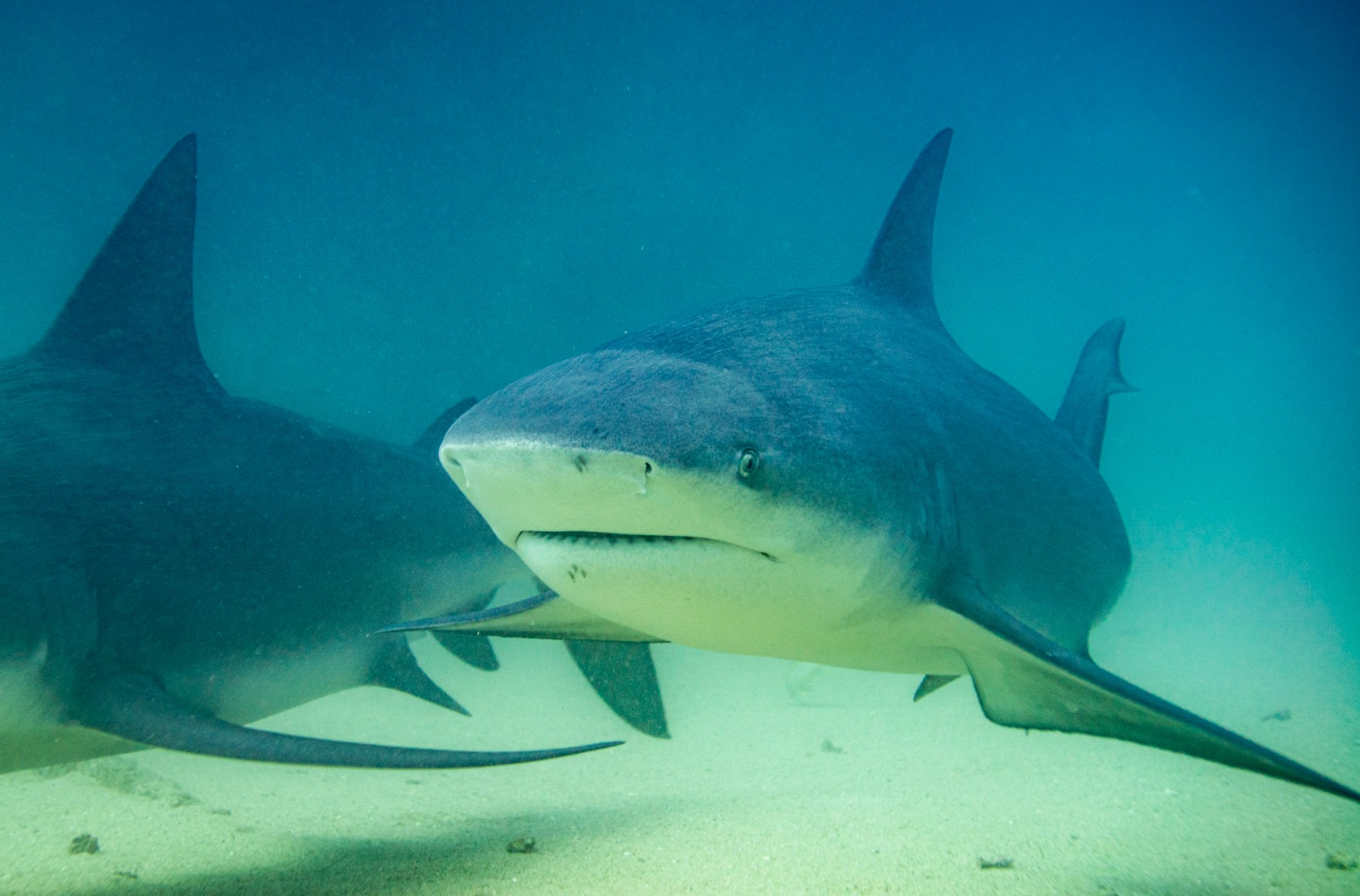
Best time to dive Cabo
June to November is the best time to dive Cabo San Lucas and sites around Los Cabos. Underwater visibility extends up to 100 feet and more during these months.
For bathtub warm waters, visit Cabo in October, when the water temperatures fluctuate between 80 and 85 degrees F on average. Our October dive trip was superb!
October is also pleasant above water, whereas August and September (high summer in Cabo) are hot and muggy outside.
November is also a good month for diving Cabo San Lucas.
If you’re planning a trip to Cabo focusing on snorkeling, diving and other water activities, then October and November are the best times to go.
Diving Gordo Banks and La Paz is typically only offered June to November.

In the winter months, the water is colder – between 64 and 74 degrees F.
Scuba diving Cabo in January wouldn’t be our cup of tea.
But lots of people do still dive Los Cabos in winter, and there are plenty of dive tours that head out to Land’s End, for example, during this time.
So don’t let us put you off.
Wear a proper wetsuit, and go for it!
Learning how to scuba dive in Cabo
You can take a three-hour basic Discover Scuba Diving course (or “resort course”) which introduces you to the basics of diving and teaches you some skills, so you can go out and dive with an instructor.
Usually the dive takes place at an easy shallow area (like the North Wall at Land’s End).
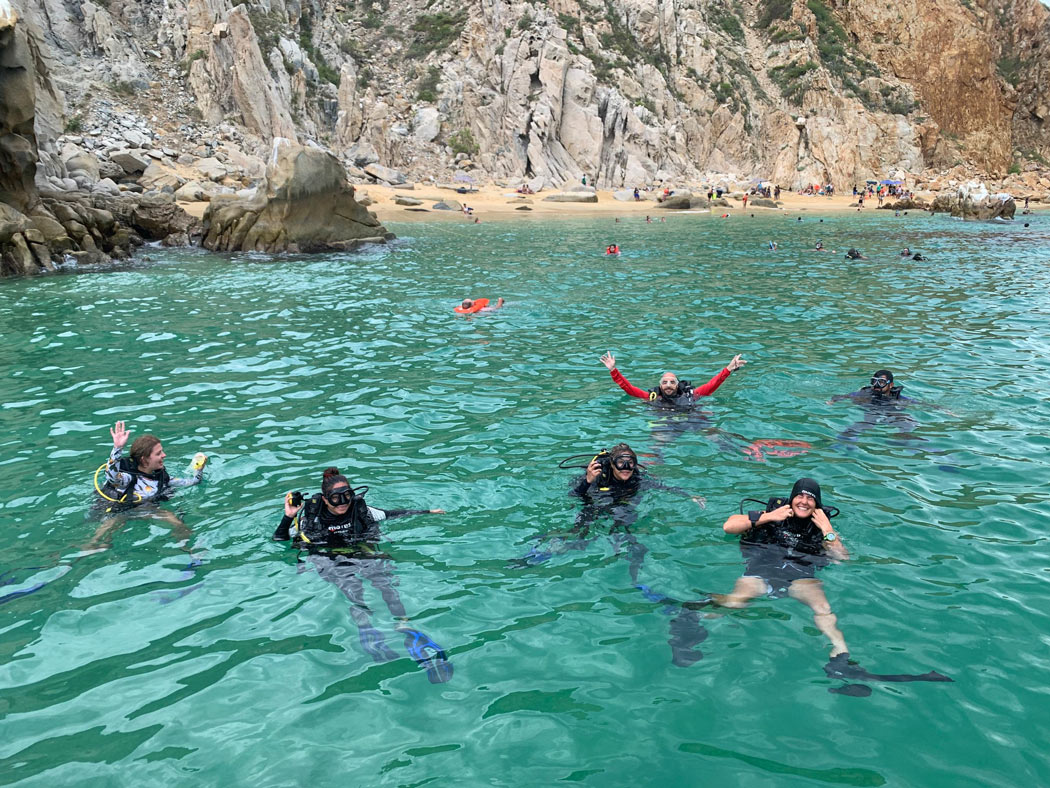
This doesn’t certify you as a diver, however.
If you’re keen to get your PADI Open Water Diver certification – which is the most common certification – you can do this open water course in four to five days.
Reputable dive shops in Cabo San Lucas
These are all reputable outfits offering tours, lessons and packages for diving Cabo San Lucas:
That wraps up our guide on Cabo San Lucas diving!
If you’re a certified scuba diver – or would like to learn how to dive – there’s great scuba diving in Los Cabos.

October and November are the best times to go, when the water temperature is the warmest and the water viz is exceptional.
Just writing this guide on scuba diving Cabo San Lucas (and remembering how much fun we’ve had diving here) makes us want to go again!
Discover more of Los Cabos!
- Winter is the time for whale watching in Los Cabos!
- The best Cabo San Lucas sunset cruises
- Cravin’ pasta? See these top Italian restaurants in Cabo
Our favorite resources for planning a trip to Cabo
Resorts: Booking.com is great for scoring a “wow” hotel in Cabo – or at least a decent one. (We especially like their flexible cancellation policy!)
Vacation homes, condos and rentals: We prefer and use Vrbo (Vacation Rentals by Owner).
Tours: For the best local guided tours in Cabo, see Viator and GetYourGuide.
Car rental: Renting a car in Los Cabos is one of the best ways to explore. Discover Cars searches car rental companies so you get the best rates.
Travel insurance: SafetyWing is designed for frequent travelers, long-term adventurers and digital nomads. It covers medical expenses, lost checked luggage, trip interruption and more. We also have and recommend Medjet for global air medical transportation and travel security.
Need more help?
- See our Start here page. It lists everything we’ve written on Cabo.
- Also check our Ultimate Cabo travel guide and our article on Planning your Cabo vacation: Essential tips.
Pssst! If you make a booking or purchase through our site, we may earn a small commission (at no cost to you). Thanks!
Photos: 2, 7 © Janice and George Mucalov, Cabo Visitor
About the authors
